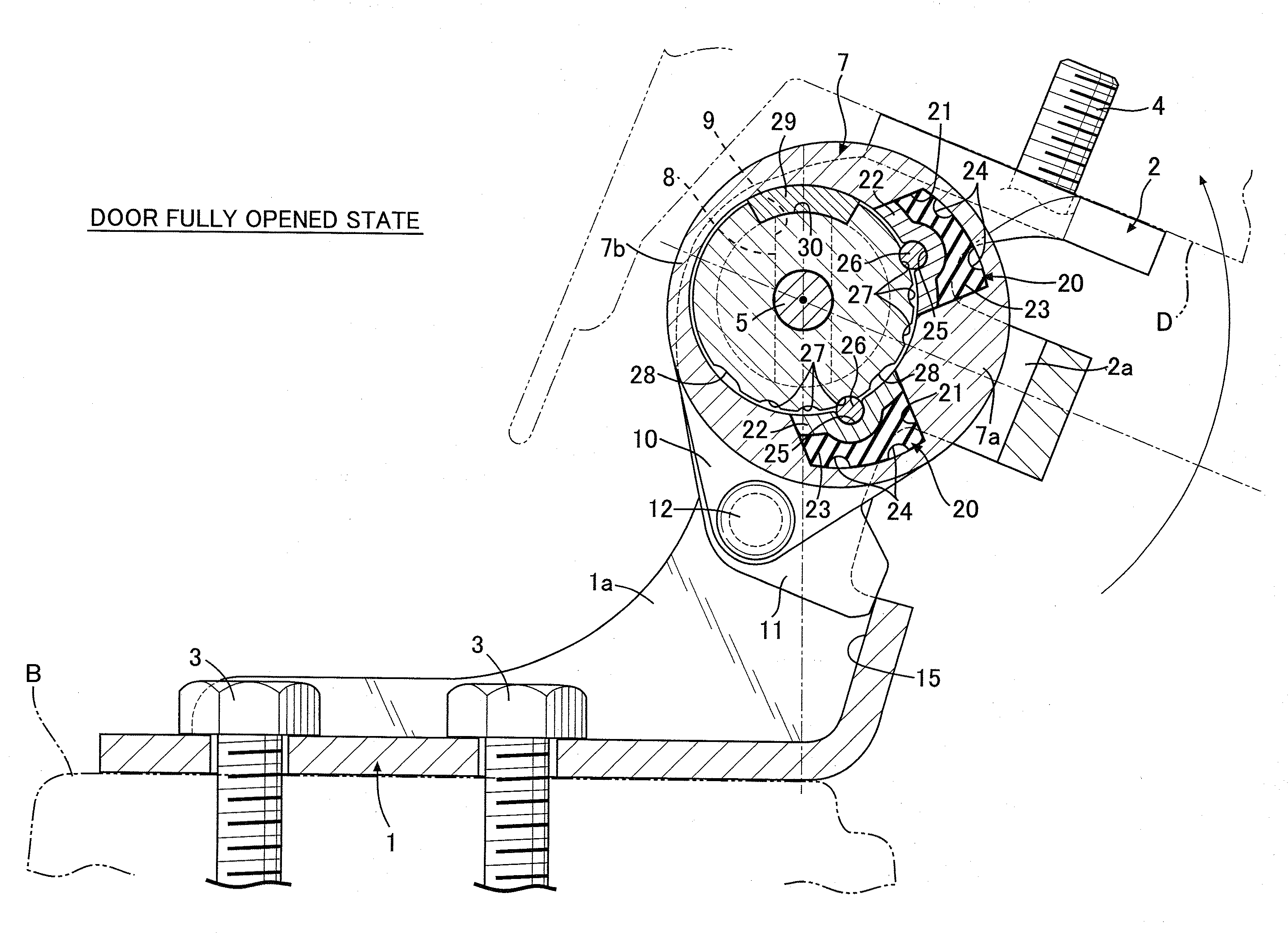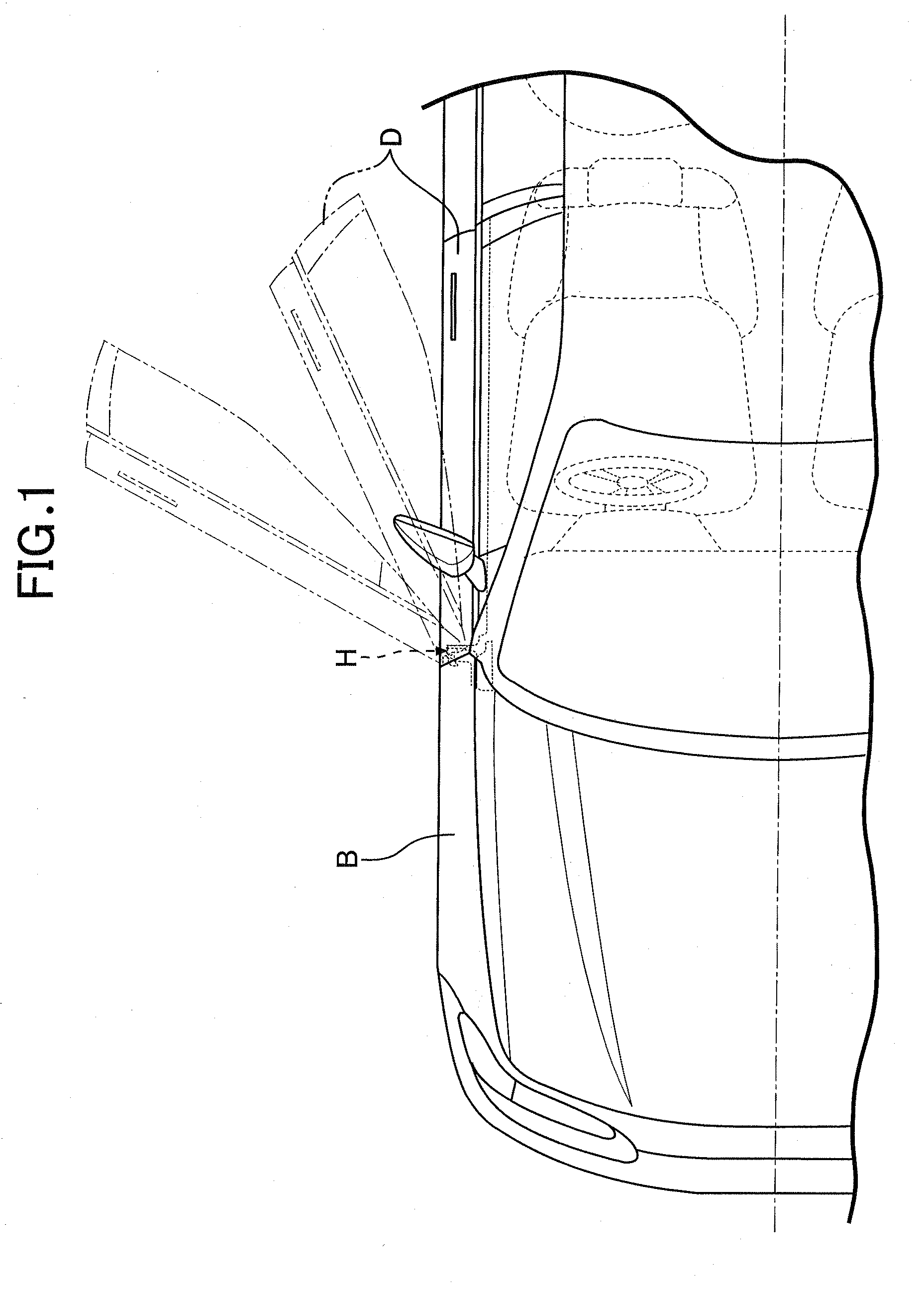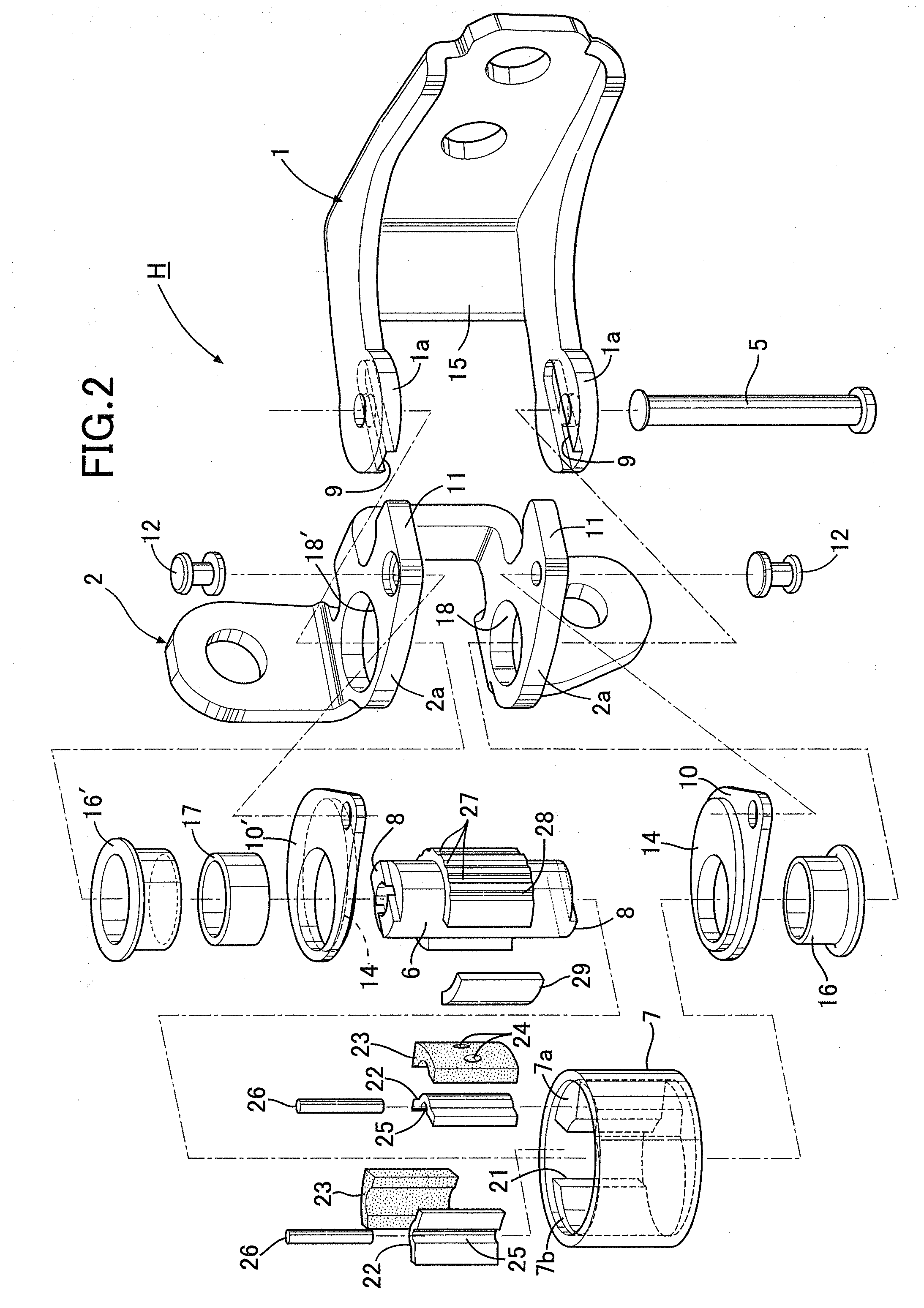Checker-Equipped Door Hinge Device for Vehicle
a technology for door hinges and vehicles, which is applied in the direction of door/window fittings, multi-purpose tools, construction, etc., can solve the problems of difficult arrangement of door hinge devices in a narrow and small space between the body and the door of an automobil
- Summary
- Abstract
- Description
- Claims
- Application Information
AI Technical Summary
Benefits of technology
Problems solved by technology
Method used
Image
Examples
first embodiment
[0025]Firstly, the present invention will be described. In FIG. 1, a door D is rotatably attached to a body B of an automobile with a door hinge device H interposed therebetween so that the door D can open and close the door opening of the automobile.
[0026]As shown in FIGS. 2 to 5, the door hinge device H includes: a female bracket 1 fixed to the body B with a plurality of bolts 3; a male bracket 2 fixed to the door D with a plurality of bolts 4; and a hinge pin 5 disposed in a vertical direction to couple these brackets 1 and 2 in a relatively rotatable manner.
[0027]The female bracket 1 includes a pair of upper and lower female arm portions 1a. A pair of upper and lower male arm portions 2a of the male bracket 2 are arranged adjacently on the inner sides of the upper and lower female arm portions 1a, respectively. The hinge pin 5 is arranged to vertically penetrate the arm portions 1a and 2a. The hinge pin 5 is fixed to the female arm portions 1a by an enlarged head portion 5a on o...
second embodiment
[0055]Next, the present invention, which is shown in FIG. 10, will be described.
[0056]In the second embodiment, each of the holding members 22 provided respectively in the attachment concave portions 21 in the outer cylinder 7 is formed of a plate spring, and includes a pair of end wall portions 22a and a flexible connecting wall portion 22b. The end wall portions 22a are placed respectively on the inner walls, facing each other in the circumferential direction of the outer cylinder 7, of the attachment concave portion 21, while the connecting wall portion 22b integrally connect the end wall portions 22a to each other. A holding groove 25 for holding the detent roller 26 is formed in the connecting wall portion 22b, while the elastic member 23 made of rubber is filled in the attachment concave portion 21 so as to urge the connecting wall portion 22b towards the inner cylinder 6. Since the other configurations in the second embodiment are the same as those of the aforementioned embod...
third embodiment
[0058]Lastly, the present invention, which is shown in FIG. 11, will be described.
[0059]The third embodiment shows that a semi-columnar detent projection 26 extending in the axial direction of the outer cylinder 7 may be formed integrally on each holding member 22 in place of the detent roller 26 in each of the first and second embodiments. FIG. 11 shows a representative example of the third embodiment, in which the holding members 22 and the detent roller 26 in the first embodiment shown in FIG. 5 are modified. Since the other configurations in the third embodiment are the same as those of the first embodiment, parts corresponding to those in the first embodiment will be denoted by the same reference numerals in FIG. 11, and overlapping descriptions therefor will be omitted.
[0060]According to the third embodiment, the forming of the detent projection 26 integrally on each holding member 22 makes it possible to simplify the structure by reducing the number of components, and further...
PUM
 Login to View More
Login to View More Abstract
Description
Claims
Application Information
 Login to View More
Login to View More - R&D
- Intellectual Property
- Life Sciences
- Materials
- Tech Scout
- Unparalleled Data Quality
- Higher Quality Content
- 60% Fewer Hallucinations
Browse by: Latest US Patents, China's latest patents, Technical Efficacy Thesaurus, Application Domain, Technology Topic, Popular Technical Reports.
© 2025 PatSnap. All rights reserved.Legal|Privacy policy|Modern Slavery Act Transparency Statement|Sitemap|About US| Contact US: help@patsnap.com



